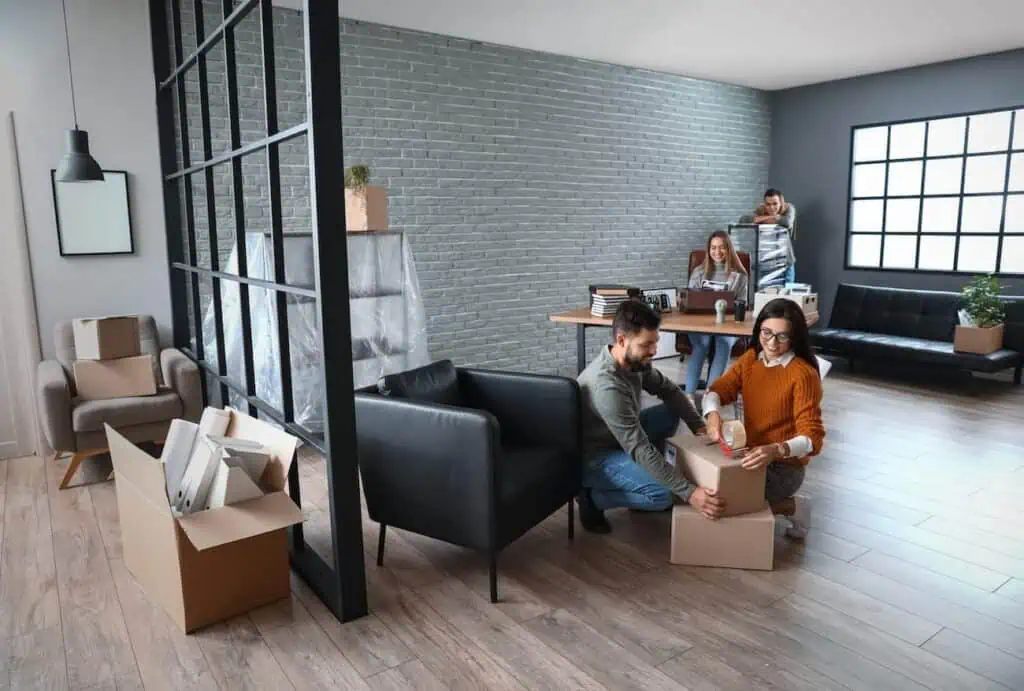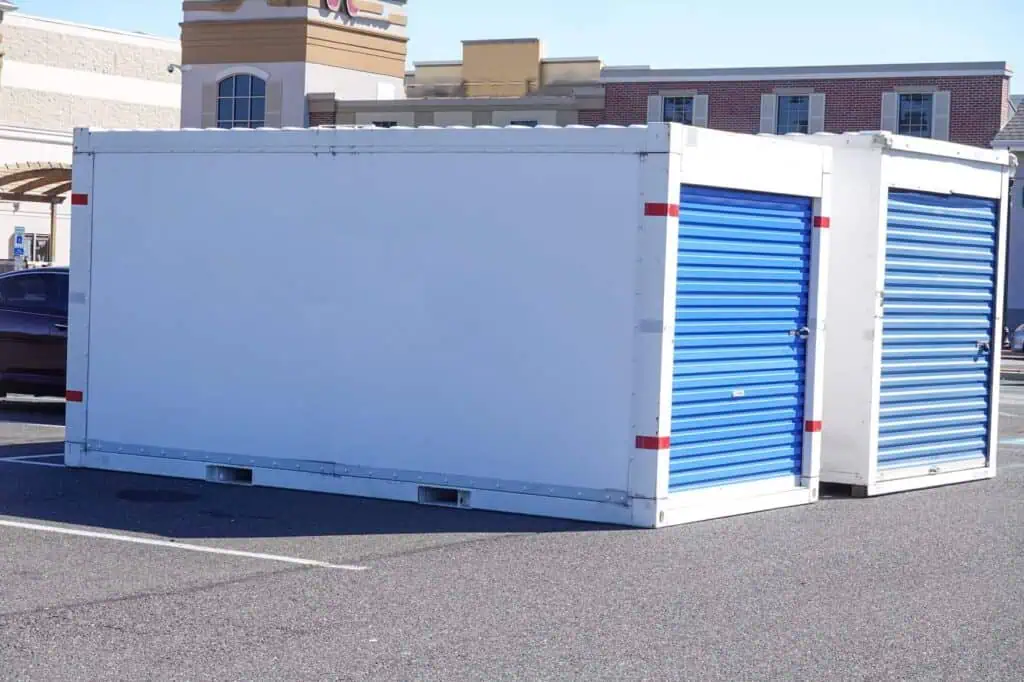Moving is a fact of life, but traditional moving practices often leave behind a harmful environmental footprint. Increased carbon emissions, packaging waste, and air pollution are just a few of the issues.
Eco-friendly moving tips are a practical, impactful way to limit your carbon footprint and reduce waste. In this green moving guide, we’ll look at how small, meaningful decisions — before, during, and after your move — can make a lasting difference.
Why Eco-Friendly Moving Matters
For anyone who prefers to have an environmentally friendly home, the eco-cost of moving can be daunting. The average moving truck generates CO2 at a rate of just under 162 grams per ton-mile. Add in waste from single-use items, such as cardboard boxes and plastic wrap, and one move can have a long-lasting impact on the planet.
“You’ll probably still need boxes, but you don’t necessarily need to buy them new. Ask neighbors and local stores if they have boxes they’re planning to recycle”
From reusing boxes to switching from bubble wrap to blankets, committing to more sustainable moving choices can help mitigate environmental damage and set a new standard. Over time, that means fewer items in landfills, more opportunities for recycling, and better air quality for all.
Pre-Move Planning Tips
As you plan for your upcoming move, start thinking about how you can set the stage for a more sustainable relocation.
Declutter and Donate Responsibly
Decluttering as you pack is one of the easiest ways to make your move more sustainable. Getting rid of outdated, broken, or unnecessary items lowers the total weight of what you’re moving. Less weight means fewer emissions, since trucks require less fuel to transport your belongings across the state or country.
Separate your no-longer-needed items into three categories and decide how you can responsibly let those belongings go.
- Donate: Anything that’s still in good condition can be donated to your local Boys and Girls Club, shelter, or other nonprofit organization. Some charities even offer pickup so you can remove a drop-off trip from your to-do list.
- Sell: Utilize platforms like Facebook Marketplace, Craigslist, and OfferUp to sell secondhand household goods locally. You can also look into “no-buy” groups in your area. Stick to local audiences to avoid shipping, which can cut into profits and raise your carbon footprint.
- Recycle: Use a database like Earth911 to search for a recycling center near you. You can even refine your search by the material you’re interested in recycling, including items like batteries, electronics, and automotive gear that can be harder to process.
Choose a Green Moving Company
Shop around for a moving company that actively supports green moving initiatives. This includes carbon-neutral practices, incorporating electric vehicles into their fleets, and providing reusable moving bins for customers who want to cut down on packing waste.
Sustainable Packing Strategies
Continue your sustainable efforts by packing with intention and without materials that will ultimately be thrown away. Packing supplies are one of the biggest sources of moving waste since most are meant to be used once and tossed. Choosing reusable, recyclable, or repurposed materials makes a big difference.
Reuse and Repurpose Packing Materials
Start by using whatever you have around the house for convenient (and reusable) packing and storage. Suitcases, plastic bins, hampers, duffle bags, and decorative trunks all gain a second purpose when you fill them with clothes, linens, toys, and pillows.
You’ll probably still need boxes, but you don’t necessarily need to buy them new. Ask neighbors and local stores if they have boxes they’re planning to recycle. You can also check your neighborhood groups or Facebook Marketplace for box bundles from locals who have recently moved.
Use Eco-Friendly Packing Supplies
Many traditional packing materials, like packing paper and Styrofoam peanuts, are tossed once you reach your destination. Consider switching to eco-friendly packing materials, including:
- Biodegradable packing peanuts
- Cornstarch peanuts
- Recycled paper
- Plant-based options, such as mushroom- and hemp-based padding
- Corrugated bubble wrap (recycled cardboard formed into a honeycomb-like wrapping)
Even though regular bubble wrap and plastic wrap are typically mentioned as packing must-haves, they’re not eco-friendly options and can be more difficult to reuse.
Rent Instead of Buy
A big part of zero-waste moving, an approach that aims to eliminate disposable materials, is swapping out cardboard boxes that can easily deteriorate in favor of durable ones. Many eco-conscious moving companies and third-party vendors now allow you to rent moving boxes.
These rental boxes, which are often made of plastic, have several advantages:
- Impressive durability
- Offered in a variety of sizes and types
- Safer for transporting fragile items
- Secure non-tape closures
- Certain styles may be easy to stack or collapse for convenient storage
- Rental fees may be more affordable than buying a large number of boxes
Ask the rental company whether you’re responsible for returning the boxes or if the rental includes a free pick-up service.
Optimize Transportation
Packing is a huge part of executing an eco-friendly move, but your transportation choices matter just as much — if not more. You can minimize your carbon footprint when moving by following these tips about what you should consider on your moving day and how to choose the right truck.
Consolidate trips
You should try to pack as efficiently as possible to save space and transport all your items in one trip. This could mean decluttering before packing, packing smaller items inside of larger items, and dismantling larger pieces when possible. Also, make sure all your belongings are ready to go on moving day to prevent a second trip later on.
Choose the right vehicle size
A moving truck that’s too small can result in multiple trips or overcrowded items that risk getting damaged. A truck that’s too big uses more fuel than necessary and can leave extra room for your belongings to shift around and break.
“The average moving truck generates CO2 at a rate of just under 162 grams per ton-mile. Add in waste from single-use items, such as cardboard boxes and plastic wrap, and one move can have a long-lasting impact on the planet.”
Instead of guessing, use tools like Penske’s Truck Size Wizard can help you identify the size truck you need based on a customized inventory of your belongings.
Combine moves when possible
If you have a friend or neighbor who is also moving, consider combining resources to share a truck, packing materials, and overall costs. You’ll also share the workload of packing and unpacking if you choose a truck-only move (where labor is not included).
Fuel-Efficient Routes and Timing
One of the best ways to optimize fuel usage during a move is to reduce mileage and idling time. Strategies might include:
- Reducing the number of stops along the way
- Avoiding unnecessary detours
- Considering factors like traffic and speed limits
- Minimizing left turns, which tend to be more time-consuming
- Sticking to routes that allow efficient driving speeds of 40-50 mph
You can use a GPS tool or a route optimization service to explore multiple routes, and try to time your move so you’re on the road outside of local rush hours. Just be sure to check on the same day and time as your scheduled move, as traffic patterns can shift significantly.
Post-Move Sustainability
As you unpack after a move, consider these eco-friendly moving tips to keep the sustainability going even after your moving day has come and gone.
Recycle or Reuse Boxes and Supplies
Whether you used recyclable or reusable boxes and supplies, now’s the time to pass them along or dispose of them responsibly. That could mean posting items for sale or free pickup on a local neighborhood group or marketplace. Or, you can use the Earth911 recycling search tool to find a recycling center near you.
However, there are more ways to give your eco-friendly moving supplies a second life:
- Use cardboard boxes to build a fort or a temporary home for your pet (the kids can help build and decorate it).
- Shred paper for pet bedding or to use as insulation.
- Decorate packing paper with stamps and markers for personalized stationery or wrapping paper.
- Stack smaller boxes to use for tool or shoe storage in your garage.
- Break down cardboard boxes and use panels for weed control in your vegetable garden.
- Use bubble packs to pack fragile or dirty items in your suitcase when leaving for or coming home from a trip.
- Cover cardboard cutouts in fabric remnants to make bespoke picture frames or wall décor.
Support Local and Eco-Conscious Services
After researching green moving resources, take some time to explore eco-friendly services and vendors in your new neighborhood.
- Green utility providers: While renewable energy sources are becoming more prevalent, you might have limited options depending on what’s available in your area. See if your local utility companies offer solar, wind, or hydropower options.
- Eco-conscious home goods stores: If you can find an eco-conscious home goods store in your area, support it. Otherwise, you can save money and the environment by sourcing new-to-you furnishings at local thrift stores or on local marketplace apps.
- Local shops: Shopping local supports your community and reduces emissions and waste from shipping and excess packaging.
It’s okay to complete this list one item at a time. For example, you might start with one utility company while you get settled and then switch to a more eco-friendly one later.
Eco-Friendly Moving Questions, Answered
How do I find a green moving company?
While there’s no “eco-friendly” box to tick (yet), HireAHelper’s online marketplace can help you find local movers who specialize in environmentally conscious relocation. You can read through company descriptions and user reviews to find a green moving company that’s available on your preferred date.
Are eco-packing supplies worth the cost?
Eco-friendly packing supplies are typically priced a bit higher than traditional materials, but that’s not always the case. Reusable bins and biodegradable packing materials are becoming more competitively priced as they become more popular staples for moves. You may be able to rent bins or find some items secondhand.
How can I avoid single-use plastics while moving?
To fully embrace environmentally friendly moving, swap out plastic wrap and padding for moving blankets, recycled paper, and cardboard boxes. You can also use biodegradable or cloth tape and paper-based wrapping materials to seal boxes and protect fragile items.
Can I move without using cardboard boxes?
Yes! Zero-waste moving is possible if you skip buying moving boxes and rent reusable containers instead. You can also use suitcases, storage bins, and other containers you already have in place of cardboard boxes.
What is the most sustainable way to move long-distance?
The most sustainable way to execute a long-distance move is to combine eco-friendly packaging and fuel-efficient transportation. Look for moving companies that offer low-emission vehicles, declutter before you pack to maximize space, and look into reusable packing supplies.
Checklist for a Greener Move
Here’s a checklist to guide you through a greener move from start to finish.


















 Working with a second person below to guide and support the dolly as you descend the stairs is also a good idea. Even a
Working with a second person below to guide and support the dolly as you descend the stairs is also a good idea. Even a 







